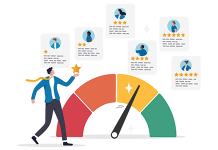The overwhelming majority of sales trainers operate under the belief that their mission is to conduct sales training. They develop workshops, scripts and motivational content all focused on improving the act of selling. The truth, however, is that the purpose of sales training has little to do with training at all.
The only reason sales training exists is to drive measurable increases in revenue.
The purpose of sales training is not to train individuals, it is to improve financial performance. That may sound like a play on words, but it represents a fundamental philosophical difference between traditional training and programs designed for real enterprise results.
Sales Training Is a Process, Not an Enterprise Goal
In many organizations, sales training fails to produce meaningful outcomes. Research suggests that only a small fraction of what employees learn in training is ever applied effectively in their day-to-day work. The result is a poor return on investment that no other department would tolerate.
Imagine if your accounting, manufacturing or logistics teams delivered only a 10% return on their efforts.
In most cases, the problem isn’t the salespeople or the material, it’s the lack of connection between training and the organization’s revenue strategy. The good news is training is actually the single best investment an organization can make; the only caveat is it has to be done right, especially in our current workforce landscape.
Don’t Win the Battle Only to Lose the War
In our consulting and training practice, we recently worked with a client that had one of the most elaborate and expensive sales training programs I had ever seen. The sessions were impressive, the materials looked professional, and the trainers were highly credentialed. But the program failed because the focus was on closing deals at any cost. Salespeople were taught that success was defined by transactions, not relationships.
The result was an extraordinary 60% cancellation rate within weeks of each sale.
When we analyzed the company’s revenue goals, it became clear the issue was not closing, it was retention. They were great at selling but terrible at keeping customers. We replaced their traditional program with our Certified Ethical Sales Professional curriculum, which emphasizes trust, transparency and customer advocacy. Salespeople were trained to have honest conversations about potential risks, realistic expectations and pricing transparency. The result was transformative. Close rates remained steady, but cancellations dropped to the low single digits. This proved that when training is designed around strategic outcomes rather than activity, it generates measurable and lasting financial improvement.
Sales Is Uniquely Human
The second critical driver of revenue performance is human experience design. This idea is so simple it’s often overlooked, yet it has an enormous impact. Sales success depends on the emotional state and engagement level of the people who sell. As the saying goes, “hurt people hurt people.” In the same way, disengaged or unhappy salespeople rarely deliver great customer experiences. The best organizations are now investing in human experience innovation to improve the quality of work life for their sales teams. When sales professionals feel valued, supported and inspired, they naturally deliver better experiences to customers.
Happy Sales Professionals Create Happy Customers, and Happy Customers Drive Sales
In my book “What Customers Crave” and later in “What Customers Hate,” the data is clear: happy customers are less price sensitive, purchase more frequently, and demonstrate stronger loyalty.
Those same principles apply to employees. When salespeople operate in a culture built on respect, clarity and shared purpose, their effectiveness skyrockets. The path to better customer experience begins with a better employee experience. If you want sales training that truly moves the needle, start by examining the culture that surrounds your sales team. Ask whether your environment empowers people to thrive, collaborate and perform. If it doesn’t, the best training in the world will fall flat. Also avoid the idea that salespeople are coin operated. Like everyone else, they want to have their work be part of their personal growth and overarching quality of life.
Apply the Superpower of Hacking Sales
The third and final differentiator among top-performing sales organizations is collaboration and innovation. The best teams have moved beyond traditional workshops and now use collaborative ideation methods such as Sales Hackathons.
These structured sessions bring together frontline salespeople, marketers and customer service professionals to co-create ideas for improving systems, tools and processes. Instead of sitting through passive training sessions, participants actively build new strategies and test them in real-world scenarios.
In our experience, these collaborative hackathons are not only productive but transformative. They tap into the wisdom of the people closest to the customer, leading to immediate and practical improvements in how sales are made, managed and maintained. They also create enthusiasm and ownership, turning training from an obligation into an opportunity for creative problem solving.
As Simple As One, Two, Three
So, there you have it. The most successful sales training programs in the world begin with a shift in thinking.
- First, recognize that sales training is not your purpose, revenue impact is.
- Second, understand that human experience design is the foundation of both employee and customer satisfaction, and that satisfaction drives measurable growth.
- Finally, make training a collaborative process that engages your teams as creators rather than passive participants.
When sales training is tied directly to enterprise goals, aligned with human experience, and energized by collaboration, it stops being a cost center and becomes a true driver of profit. The purpose of sales training is not sales training; it is sustained, predictable and meaningful revenue growth.





